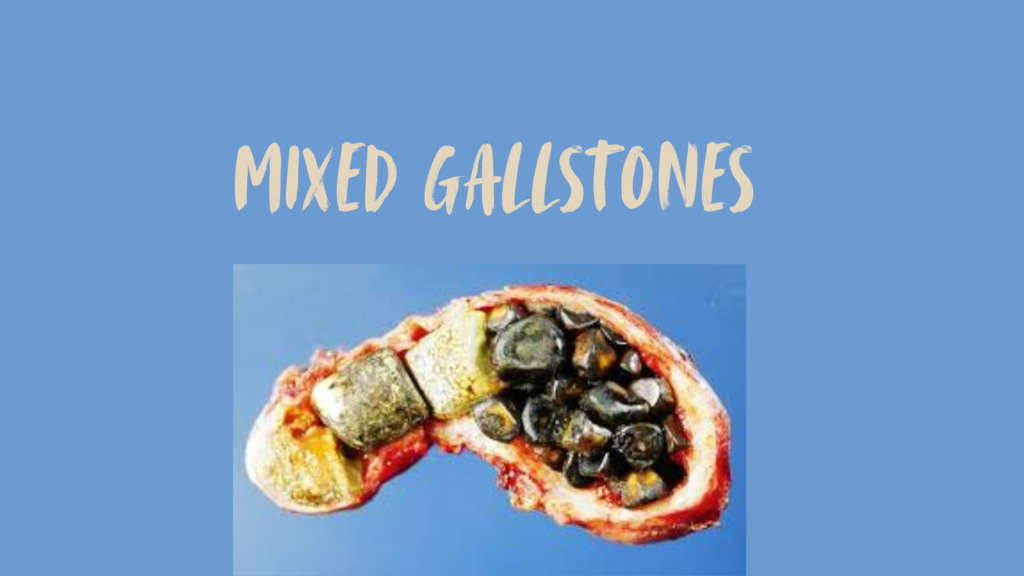
Mixed gallstones are a prevalent type of gallstone, comprising approximately 20–30% of cases. They are characterized by a combination of cholesterol, calcium salts (such as calcium bilirubinate and calcium carbonate), and bile pigments like bilirubin. These stones often form as a result of chronic inflammation or infection within the biliary tract.(pmc.ncbi.nlm.nih.gov)
🧬 Pathogenesis
The formation of mixed gallstones is closely associated with biliary tract infections. Infected bile ducts lead to the release of β-glucuronidase by bacteria and damaged hepatocytes. This enzyme hydrolyzes bilirubin glucuronides, increasing the concentration of unconjugated bilirubin in bile. The elevated levels of bilirubin, combined with cholesterol and calcium salts, contribute to the formation of mixed gallstones. (en.wikipedia.org)
⚠️ Risk Factors
- Biliary tract infections: Infections with enteric bacteria such as E. coli, Clostridium spp., and Bacteroides spp..
- Chronic pancreatitis: Inflammation of the pancreas affecting bile flow.
- Biliary stasis: Conditions leading to impaired bile flow, such as biliary strictures and choledochal cysts.
- Parasitic infections: Infections with liver flukes like Clonorchis sinensis and Opisthorchis viverrini, especially prevalent in East Asia.
🩺 Clinical Features
Symptoms of mixed gallstones may include:
- Right upper abdominal pain: Often after meals.
- Jaundice: Yellowing of the skin and eyes.
- Fever and chills: Indicating possible infection.
- Nausea and vomiting: Especially during or after meals.
These symptoms may suggest complications like cholangitis or biliary obstruction.
🧪 Diagnosis
Diagnostic approaches include:
- Ultrasound: To detect stones and assess bile duct dilation.
- CT or MRI scans: For detailed imaging of the biliary tract.
- Endoscopic retrograde cholangiopancreatography (ERCP): Allows for visualization and removal of stones from the bile ducts.
- Blood tests: To evaluate liver function and detect signs of infection or inflammation.
🛠️ Treatment Options
- Endoscopic procedures: ERCP is commonly used to remove stones from the bile ducts.
- Cholecystectomy: Surgical removal of the gallbladder may be considered if the gallbladder is involved.
- Antibiotics: To treat underlying infections.
- Parasitic treatment: Antiparasitic medications for infections like Clonorchis sinensis.
🛡️ Prevention Strategies
- Prompt treatment of biliary tract infections: Early intervention can prevent stone formation.
- Surgical correction of biliary tract abnormalities: Addresses structural issues that may impede bile flow.
- Prevention and treatment of parasitic infections: Reduces the risk of stone formation associated with parasitic infestations.
